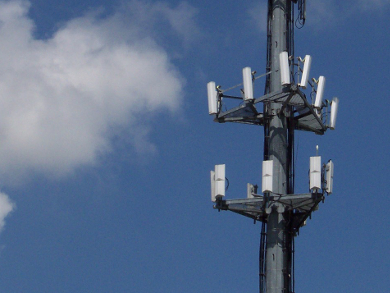Air pollutants such as particulate matter, ozone, and nitrogen oxides can cause respiratory problems and other health issues. Temperature inversion in the lower atmosphere, where the air gets warmer instead of colder with rising height, can contribute to poor air quality by trapping such pollutants near the ground. Monitoring inversion usually involves towers equipped with temperature sensors, which are costly and can only cover selected points.
Noam David, Cornell University, Ithaca, NY, USA, and H. Oliver Gao, Cornell University, Ithaca, NY, USA, and Guest Professor at Changsha University of Science and Technology, China, have developed a method for detecting temperature inversions that uses signal measurements from cell phone networks during routine operation. Cell towers are ubiquitous in many countries and cover large areas. The team’s approach relies on the fact that atmospheric conditions can interfere with electromagnetic waves. Temperature inversions cause a change in the atmosphere’s refraction index and can amplify the microwave signals that are transmitted by cell towers.
The researchers tested their method by analyzing cases of air pollution in Israel that took place in 2009 and 2010. They found that changes in the cellular signal levels correlated with high levels of nitrogen oxides and particulate matter in the atmosphere, which were measured using conventional instruments. The method is cost-efficient and could improve hazard warnings about poor air quality.
- Using Cellular Communication Networks To Detect Air Pollution,
Noam David, H. Oliver Gao,
Environ. Sci. Technol. 2016.
DOI: 10.1021/acs.est.6b00681



